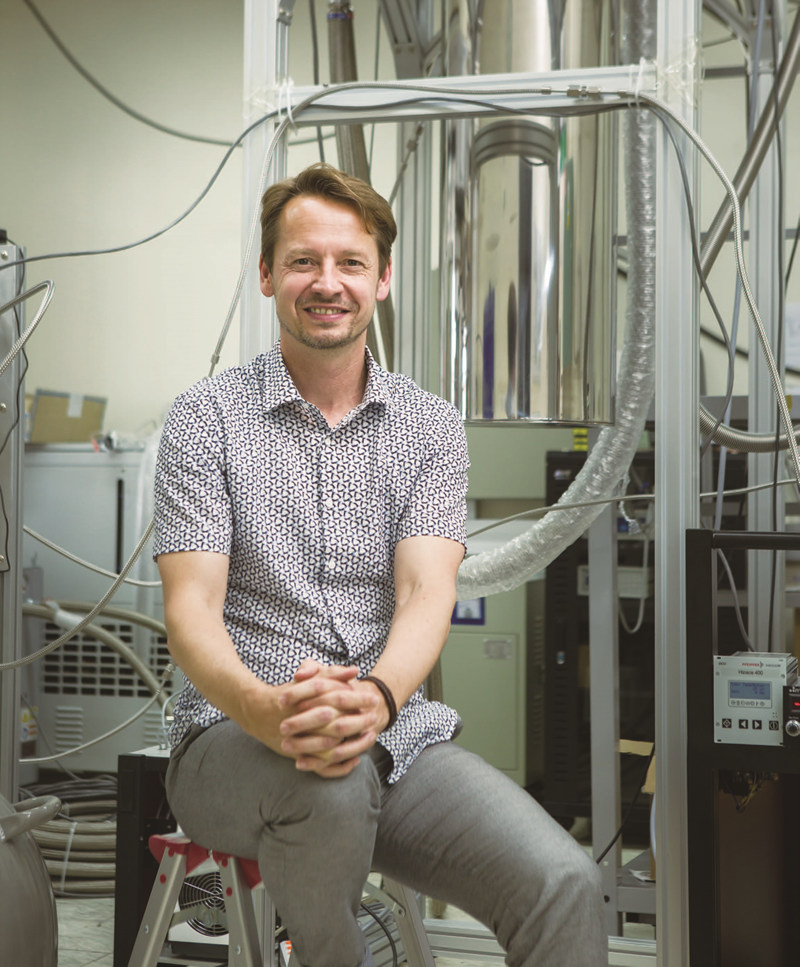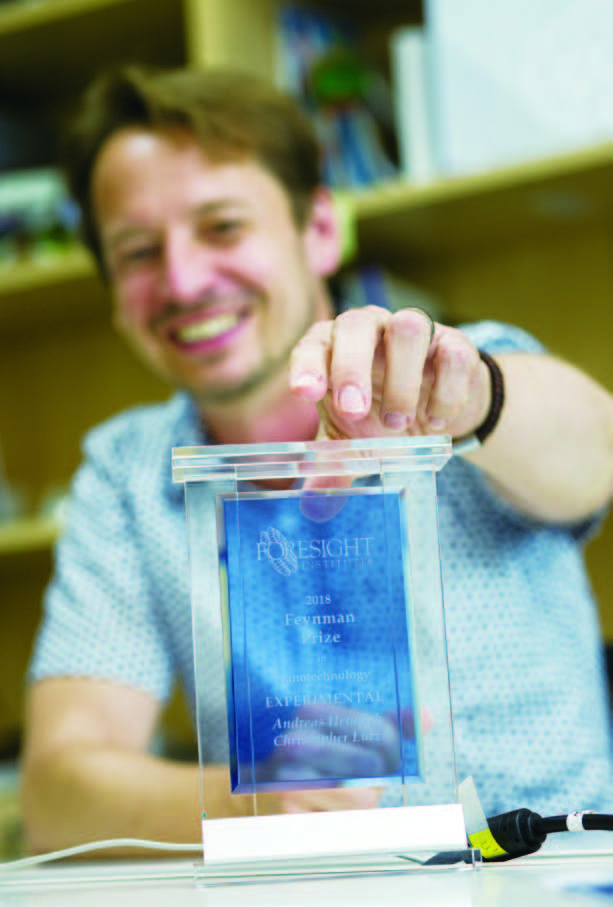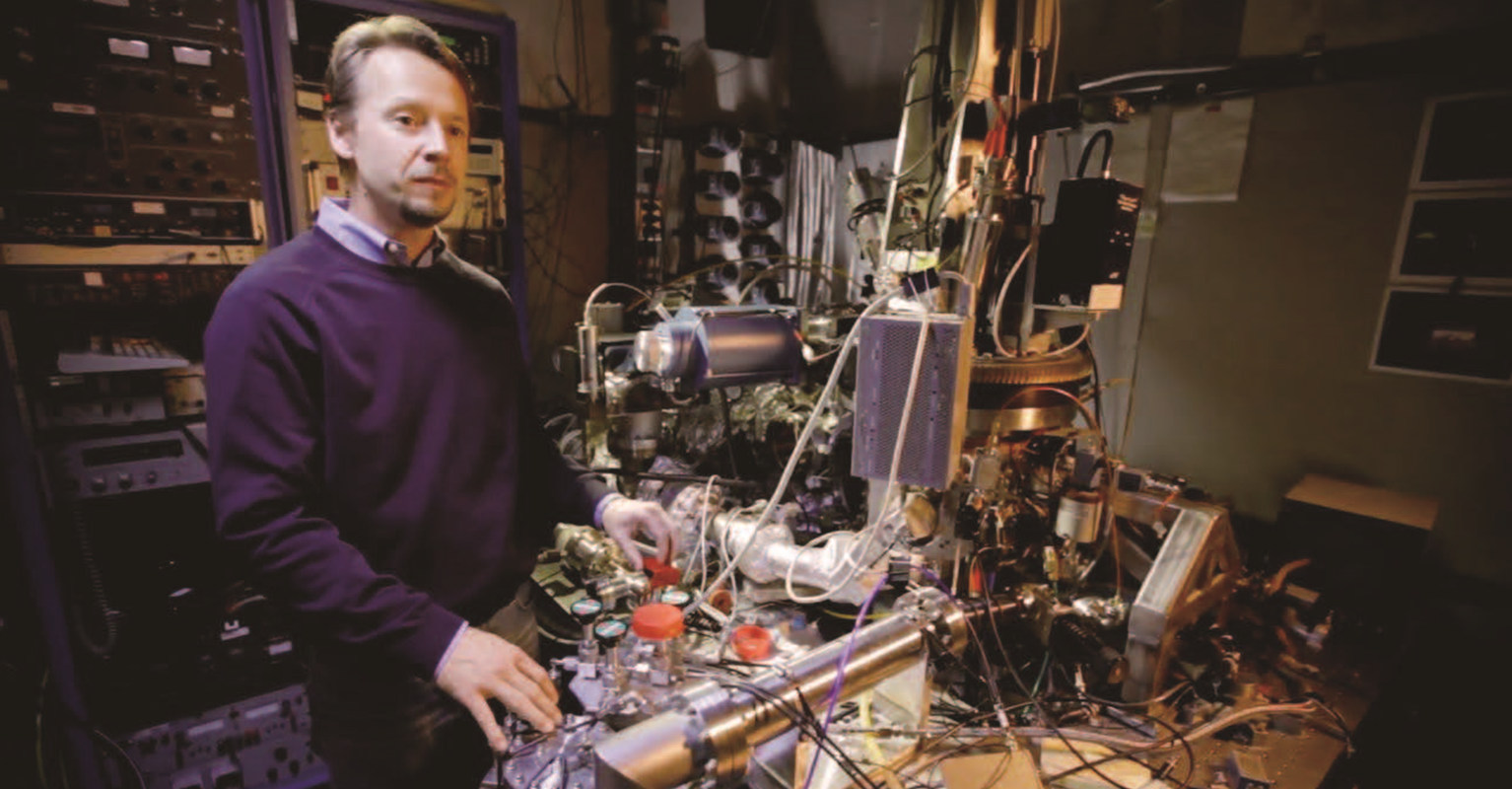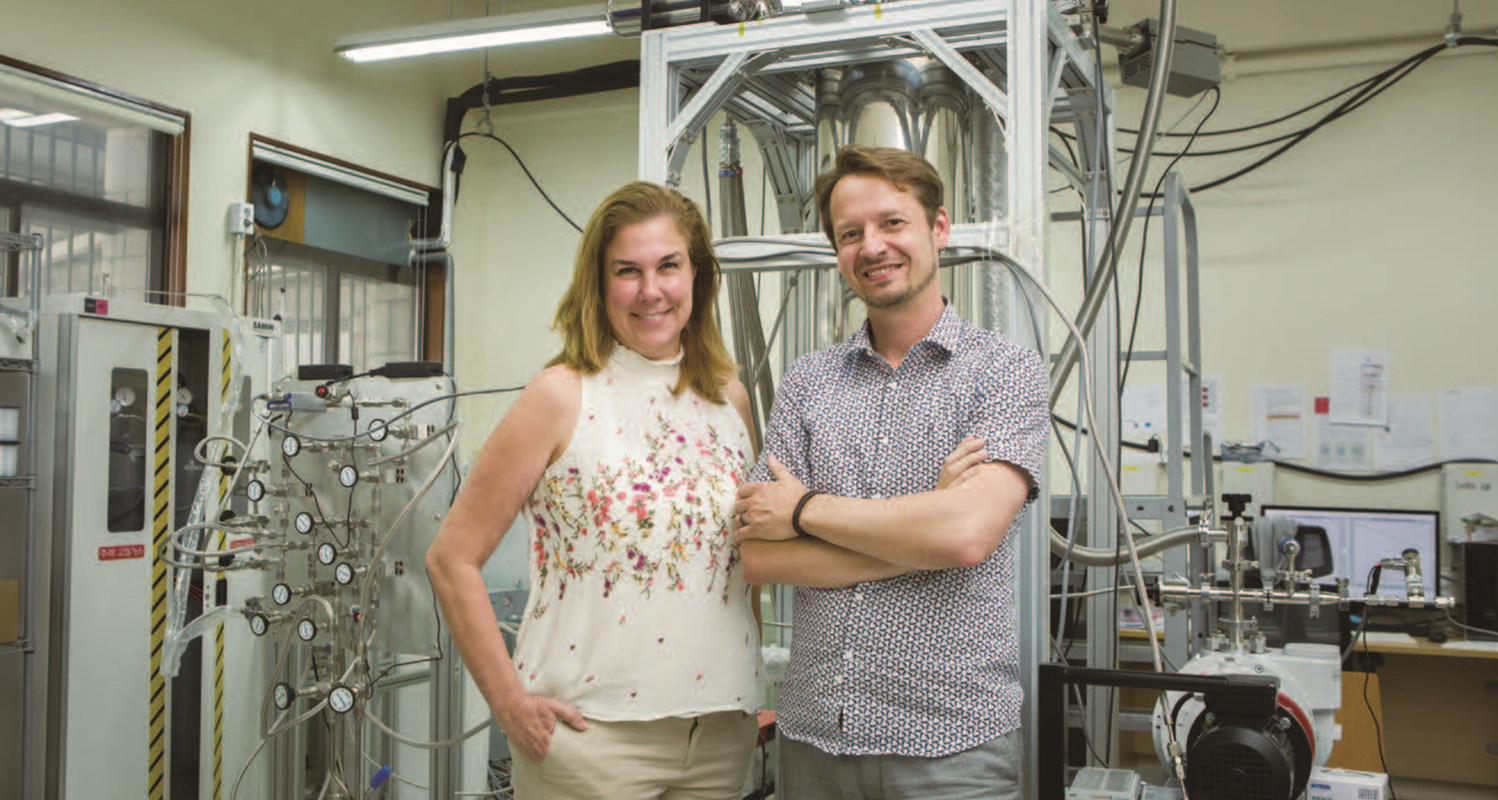주메뉴
- About IBS 연구원소개
-
Research Centers
연구단소개
- Research Outcomes
- Mathematics
- Physics
- Center for Underground Physics
- Center for Theoretical Physics of the Universe (Particle Theory and Cosmology Group)
- Center for Theoretical Physics of the Universe (Cosmology, Gravity and Astroparticle Physics Group)
- Dark Matter Axion Group
- Center for Artificial Low Dimensional Electronic Systems
- Center for Theoretical Physics of Complex Systems
- Center for Quantum Nanoscience
- Center for Exotic Nuclear Studies
- Center for Van der Waals Quantum Solids
- Center for Relativistic Laser Science
- Chemistry
- Life Sciences
- Earth Science
- Interdisciplinary
- Center for Neuroscience Imaging Research (Neuro Technology Group)
- Center for Neuroscience Imaging Research (Cognitive and Computational Neuroscience Group)
- Center for Algorithmic and Robotized Synthesis
- Center for Genome Engineering
- Center for Nanomedicine
- Center for Biomolecular and Cellular Structure
- Center for 2D Quantum Heterostructures
- Center for Quantum Conversion Research
- Institutes
- Korea Virus Research Institute
- News Center 뉴스 센터
- Career 인재초빙
- Living in Korea IBS School-UST
- IBS School 윤리경영


주메뉴
- About IBS
-
Research Centers
- Research Outcomes
- Mathematics
- Physics
- Center for Underground Physics
- Center for Theoretical Physics of the Universe (Particle Theory and Cosmology Group)
- Center for Theoretical Physics of the Universe (Cosmology, Gravity and Astroparticle Physics Group)
- Dark Matter Axion Group
- Center for Artificial Low Dimensional Electronic Systems
- Center for Theoretical Physics of Complex Systems
- Center for Quantum Nanoscience
- Center for Exotic Nuclear Studies
- Center for Van der Waals Quantum Solids
- Center for Relativistic Laser Science
- Chemistry
- Life Sciences
- Earth Science
- Interdisciplinary
- Center for Neuroscience Imaging Research (Neuro Technology Group)
- Center for Neuroscience Imaging Research (Cognitive and Computational Neuroscience Group)
- Center for Algorithmic and Robotized Synthesis
- Center for Genome Engineering
- Center for Nanomedicine
- Center for Biomolecular and Cellular Structure
- Center for 2D Quantum Heterostructures
- Center for Quantum Conversion Research
- Institutes
- Korea Virus Research Institute
- News Center
- Career
- Living in Korea
- IBS School
News Center
| Title | Exploring the quantum world inside atoms | ||||
|---|---|---|---|---|---|
| Name | Communications Team | Registration Date | 2018-09-10 | Hits | 9330 |
| att. |
 thumb.jpg
thumb.jpg
|
||||
Exploring the quantum world inside atoms- Andreas Heinrich Director of the IBS Center for Quantum Nanoscience
Richard Feynman, the prominent US physicist, foresaw the infinite possibility of nanotechnology many years ago. He envisioned a world where the entire 24 volumes of the Encyclopedia Britannica could be written on the head of a pin, in similar fashion as the entire genetic information is coded into DNA, a molecule composed of two amino acid chains that reside in a tiny cell. Feynman believed that advancing nanotechnology would allow us to reposition individual atoms as we desire and build things at the atomic scale. Back to Back Recipient of Both Feynman Prize and Joseph F. Keithley Award"It is certainly an honor to have the international science community recognize my efforts. I'm looking foward to achieving the same level of progress or more in Korea."
This allows us to precisely measure the energy levels of the spin states of atoms," says Director Heinrich. He added, ''Now we can measure interatomic interactions as well as the quantum state of individual atoms." More recently, researchers have combined electron spin resonance (ESR) spectroscopy and STM based on IETS technique to increase the energy resolution by more than 1,000 times. Thanks to these advances, we are now able to measure electrons in excited states, which is observed in atoms and nanostructures on surfaces, and to distinguish electrons in exited and ground states. Among other advances, this confirms that we can use atoms as a data storing devices. Childhood Curiosity Leads to IBM ResearchDirector Heinrich's favorite childhood pastime was disassembling mechanical devices with a curiosity about what lies inside and how they work. His childhood curiosity over mechanical devices and their mechanism led him to study physics in college, a domain of science that explores nature and matter. After receiving his PhD in solid state physics at the University of Gӧttingen in Germany, Director Heinrich continued his research career as a postdoc at IBM Research - Almaden, the world-leader in scanning tunneling microscopy (STM) at the time.
His postdoc advisor at IBM Almaden was Dr. Don Eigler, a renowned physicist who developed a new use of the scanning tunneling microscope by making it functional in ultra cold temperatures and enhancing its spatial resolution. Advanced low-temperature STMs allow researchers to manipulate and arrange individual atoms freely to create quantum nanostructurcs. It was Dr. Eigler who first demonstrated the technique for manipulating individual atoms, arranging individual xenon atoms on a nickel substrate one at a time to spell out the IBM logo. Creating the World’s Smallest MemoryMaking smaller computational devices with less energy consumption begins with reducing the amount of space taken up by one bit of digital data, as we see in the heated race to shrink the size of magnetic storage devices such as hard drives. In 2012, Director Heinrich and the research team that he led at IBM demonstrated a magnetic moment that lasted for hours, creating the smallest possible unit of magnetic storage by arranging two rows of six iron atoms on a surface of copper nitride. At the time, Director Heinrich believed that further progress was unlikely as quantum science is a highly challenging domain. To his great surprise, a Swiss research team used a different approach and demonstrated that a holmium atom, once put in motion, can maintain its spin magnetic moment (quantum-mechanical magnetism) for longer durations. The success of the Swiss team's research motivated Heinrich, now as director of his newly created IBS research center, to continue his own research, not only verifying their findings but making further progress, which was published in the journal Nature in 2017. In this study, Director Heinrich's team succeeded at writing and retrieving one bit of digital data with a single atom. Production of "Quantum" Animations: "A Boy and His Atom" and "Ewha Womans University"Director Heinrich is a prominent figure both inside and outside of the science community thanks to his effort to engage with the public. A prime example is "A Boy and His Atom," the world's smallest stop motion animation and the winner of the Golden Lion Prize at the Cannes Lions International Festival of Creativity. A team of IBM researchers led by Director Heinrich used a scanning tunneling microscope and moved 65 carbon monoxide atoms frame by frame, piecing together 242 images for the animation. Director Heinrich said, "It was produced as part of IBM's corporate marketing program to communicate why IBM does basic science and to raise its brand profile among younger generations." He added, "The four researchers in our team worked day and night for ten days, having great fun while doing it." Explaining his motivation for the project, he said, "I personally like engaging with people from outside the scientific community, and really wanted to show that science truly can be fascinating."
The center makes a broad range of efforts to engage with the public, from producing promotional videos to hosting public events. "2018 Art Competition: The Art of Quantum Nanoscience" is a good example of such efforts. "Artists and scientists are both creative, use tools in their work, and need to have an understanding of objects," explained Ms. Randall. She added, "In the long term, we want to develop an artist residence program, similar to the one that run by the Center for Quantum Technology in Singapore." A Mentor at the CenterThe new research wing is currently under construction for the center at Ewha Womans University, scheduled for completion in March next year. The new building will house a number of cutting-edge research equipment, including a scanning tunneling microscope (STM). "We will have about ten different systems and use the equipment to figure out the most effective environment for manipulating atoms and small molecules on surfaces," said Director Heinrich. The new equipment includes a laser system for manipulating atoms on surfaces and a system for modifying such systems with high-frequency electronics. ''We have gotten good results by increasing the accuracy and precision of our equipment over many years. We will continue our efforts and find answers to unanswered questions," explained Director Heinrich.
Director Heinrich said, "We are going to bring in commercially available equipment that meet the required specifications, but we also plan to build custom tools in order to add novel functionalities we need in those tools." He added, "It is often more effective to buy commercially available equipment and then to add the required functionalities." Director Heinrich believes that it is important for researchers to learn to build their own experimental equipment as well as master the related techniques. Center researchers are currently supported by two engineering staff members. |
|||||
| Next | |
|---|---|
| before |
- Content Manager
- Public Relations Team : Yim Ji Yeob 042-878-8173
- Last Update 2023-11-28 14:20
















